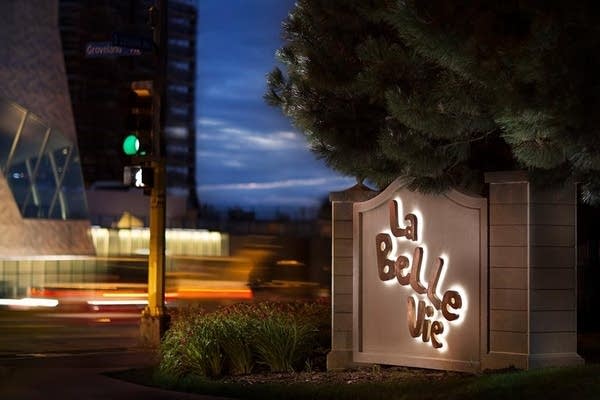Appetites: Is fine dining dead in Minnesota?

Is fine dining a thing of the past in Minnesota? A number of high-profile restaurants have opened or been announced this year, but the notable news that set the media — social and otherwise — alight was the closure of the Beard Award-winning La Belle Vie and the upcoming shut-down of Vincent A Restaurant.
MPR News' Tom Crann spoke with James Norton, the editor of Heavy Table, a daily online journal of food and drink in the Upper Midwest, about the evolution of fine dining in Minnesota.
Tom Crann: A number of people have commented on the high-profile closures of La Belle Vie and Vincent by declaring that 2015 is the end of an era for fine dining in Minnesota. Is it?
James Norton: I'm going to have to give you a wishy-washy answer on that. There is no doubt in my mind that what we mean when we say "fine dining" — it's a work in progress. It keeps changing and I think 2015 has really been a watermark in terms of that evolution. There was a white-tablecloth, Parisian-inspired dignity to both Vincent and La Belle Vie that I think evoked a standard for fine dining that dates back to the turn of the last Century, if not earlier.
Create a More Connected Minnesota
MPR News is your trusted resource for the news you need. With your support, MPR News brings accessible, courageous journalism and authentic conversation to everyone - free of paywalls and barriers. Your gift makes a difference.
Crann: And beyond that, what made them a success?
Norton: I think La Belle Vie and Vincent had such long and distinguished runs because they expertly tapped into key things that diners want: a sense that the food is made without cutting corners, and a high-quality dining experience.
And to a large extent, elements of those desires remain the same for many people, but I think the visual and edible language restaurants are using to address them is changing pretty rapidly in some ways.
Crann: Tell us more about that change. Does this mean everyone's shifting to much more casual options — perhaps ramen or fast-casual Mexican food? Because they can be great experiences.
Norton: They absolutely can be. But I think there is and will always be a strong interest in places where diners can feel taken care of and be served food that's either 100 percent up-to-date on current trends or very knowingly plugged into respected gastronomic traditions.
What's really evolving is that our collective gastronomic eye is wandering. It's not just Paris anymore at the top of the heap with everyone climbing up that mountain. You look locally — the Bachelor Farmer's Scandinavian-inspired fare is really hot. Central European food is booming over at Brasserie Zentral. Then you've got all these fine-dining Italian places like Monello, Il Foro, and Parella.
You can see a lot of exploration going on. Most of it's in Europe, but you've got places like Saffron, which does a marvelous job at bringing fine dining into the Middle Eastern sphere, and I'd throw a plug in for the marvelous Tanpopo in St. Paul, which really does Japanese fare with the respect it deserves.

And the other thing I think that's happening is we're not always looking around the world. We're looking much more to home for a fine evening out. Food from right here in Minnesota. That's even more interesting to me, I have to say. It's really exciting to see top-flight places serving food that is from or directly inspired by where we live. And that's Corner Table and Wise Acre Eatery in Minneapolis, and Heartland in St. Paul, and the Angry Trout in Grand Marais, and a lot of others.
And across the board, there's a real move toward open kitchens, toward shared plates, toward playfulness. That can mean molecular gastronomy — foams and powders and gels and that kind of thing — or unexpected presentations or obscure but delicious dishes. I think fine dining is really letting its hair down.
Crann: So, with all of that change, as you say, brought about by our wandering eye, is it possible to still define fine dining? Or is that term just obsolete?
Norton: I don't think it's actually becoming obsolete at all. I've talked with a couple of chefs at length about this, most notably Russell Klein of Meritage and Brasserie Zentral. He put it really well — it's the restaurant's role to inquire and understand about the you, the customer — "are you comfortable?"
It's all about creating a space where diners can unwind and not have to worry about anything — the food, the service, the pace of the meal — because the restaurant itself is obsessed with them. That creates this place where you can have a two or three hour conversation with an old friend or a spouse or new romance and you can actually learn things about each other and really relax. To me, at least, any place that can create that vibe is doing fine dining really well.
Crann: So, the verdict then for 2015 it sounds to me like: fine dining is dead, long live fine dining, just in a different form.
Norton: Absolutely. I can't wait to see what 2016 brings. There are a lot of exciting openings on the horizon.
And as a last parting thought: Vincent A Restaurant is open until December 31, so if you want to luxuriate in Continental style — or just get one of their amazing short ribs-stuffed hamburgers — you'd better move quickly.